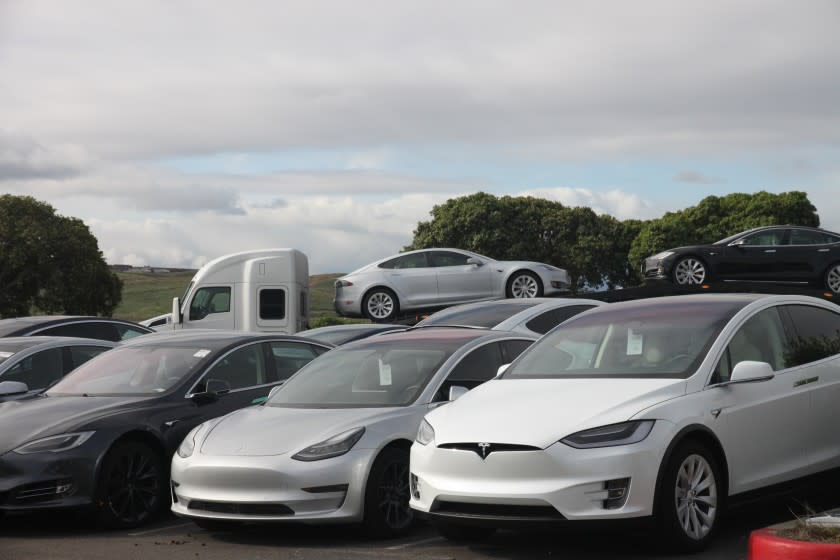The coronavirus is putting a dent in Tesla deliveries

Tesla fell victim to the coronavirus-affected economy in the first quarter, delivering 88,400 cars worldwide. In the previous quarter, Tesla had delivered 112,000 vehicles.
Analysts warn that worse is coming. The United States didn’t begin to feel the commercial effects of the virus pandemic until March, so second-quarter numbers are expected to be hit much harder, with second-half 2020 results nearly impossible to predict.
Chief Executive Elon Musk’s target of 500,000 deliveries this year will now be “virtually impossible,” said Dan Ives, who follows the company for Wedbush Securities.
Ives has lowered his year-end forecast to 400,000 to 425,000 vehicles, while Joseph Osha of JMP Securities changed his forecast to 433,000. But under stay-at-home restrictions of extended duration and worldwide economic uncertainty, those numbers amount to best guesses.
“It’s like a game of blindfolded darts,” Ives said.
Tesla’s 2020 first quarter did top the 63,000 vehicles delivered in the same period last year, by 40%. At the time, Tesla had just started sending Model 3s to Europe and was wrestling with serious delivery snafus.
The first-quarter delivery total includes 76,200 Model 3 and Model Y vehicles, and 12,200 Model S and Model X vehicles.
Tesla produced 102,672 vehicles in the first quarter, shutting down production March 24 at its Fremont, Calif., plant after the county ordered it to cease nonessential operations because of the coronavirus outbreak. The order was issued March 16 but Tesla ignored it for a week.
Tesla is still valued by the stock market near $84 billion, its shares priced like a hot growth company in good times. (The stock was down 5.6% at $454.47 at the close of trading Thursday, but surged 11% in after-hours trading.)
The stock through the first quarter has taken a wild ride. It started the year at $430, when analysts forecast first-quarter sales well above 104,000 and annual deliveries topping 500,000, compared with 387,000 in 2019. With no apparent catalyst beyond investors’ rapidly increasing enthusiasm for stocks in general, Tesla’s share price climbed to a record intraday high of $968.99 on Feb. 4 and a record close of $917.42 on Feb. 19.
One factor in the rise: Chat threads on Robinhood sites that appeal to young retail investors were lit with Tesla enthusiasm as the stock price approached $1,000.
Tesla’s new China plant was closed for about 10 days during the coronavirus outbreak in that country, and analysts say the plant is gearing up to produce 3,000 vehicles a week, if it’s not doing so already.
That would amount to a production level of 156,000 vehicles. The Fremont plant’s capacity is 500,000. That gives Tesla production capacity for 656,000 vehicles. The company also plans to build a major car factory in Germany, and several states are already bidding to host a new U.S. assembly plant that Musk teased about on Twitter.
Tesla trackers will keep an eye on the market reception of the new Model Y, a slightly larger hatchback version of the Model 3. Early reviews of the car have been positive. Model Y deliveries began March 13, in all-wheel-drive and performance versions. Two weeks later, Tesla said it would start selling the cheaper rear-wheel-drive model, with a base price of less than $50,000 and thinner profit margins than the fancier options.
While the popularity of the Model Y is yet to be determined, the Model 3 is showing signs of stress in Europe, where competition is heating up.
Last year, Musk told Wall Street analysts on a conference call that “even in a recession, worldwide demand is still something in the order of 500,000 for Model 3.”
While Tesla continues to smoke EV challengers in the U.S., Audi topped the Model 3 in Norway with its eTron SUV during the first quarter, the first time a competitor has outsold the Model 3 in that country. Norway is Tesla’s top European market.

